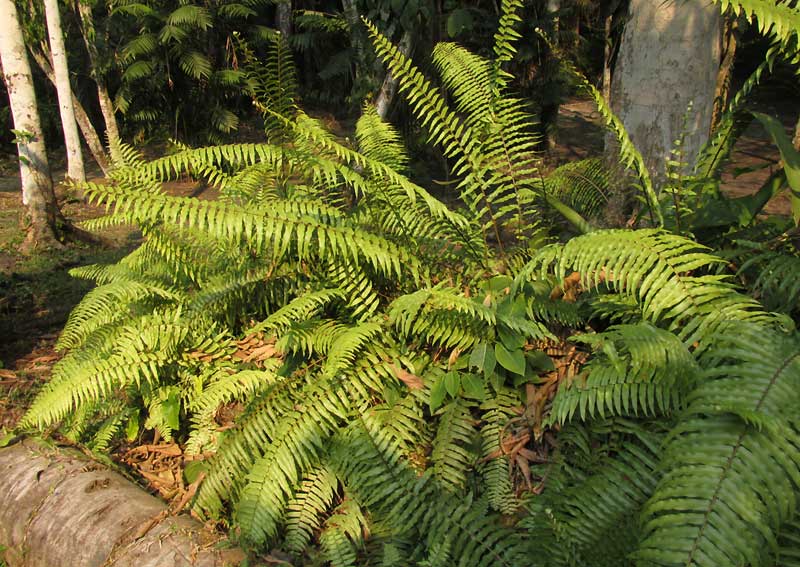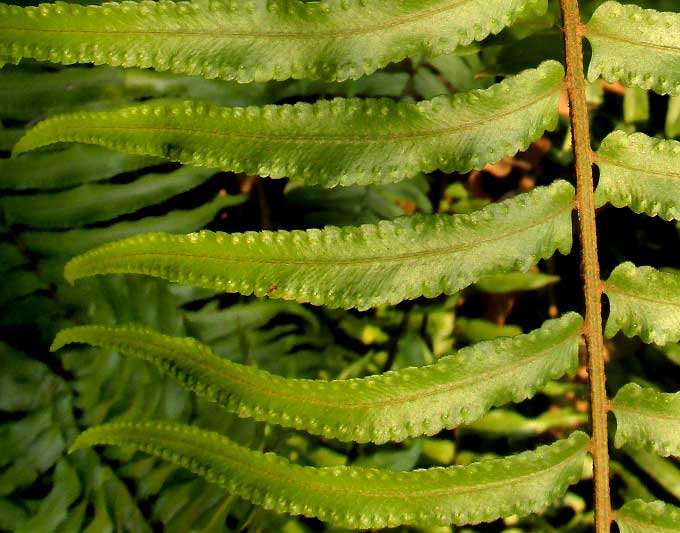Excerpts from Jim Conrad's
Naturalist Newsletter
From field notes of April 1, 2019, made during a camping trip in El Ceiba Archaeological Park about 15kms east of Sayaxché, Petén Department, northern GUATEMALA
ROUGH SWORD FERN
At the forest edge beside park headquarters, the healthy looking ferns shown below bordered the road.

Up closer, the frond subdivisions, or pinnae, looked familiar, but different. You can see them below:

With such long, slender pinnae gradually diminishing in width toward their tips, and the pinna bases lobed on one side, immediately I thought of the swordferns, genus Nephrolepis, commonly seen in the humid tropics gracing tree trunks with their dangling fronds, and known up north mostly as "hanging-basket ferns." However, of the swordfern species I've met, none came close to having such a hairy stipe. Flipping over a frond to see what the spore-producing sori looked like, a lot more hairiness turned up, as shown below:

The "kidney-shaped" sori are classic Nephrolepis, each sorus consisting of tiny bags of spores, or sporangia, on the outside curve, and a thin, cellophane-like protective "indusium" on the inner side. But the hairiness of the stipe at the top of the picture and of the pinna undersurface is remarkable, a good field mark.
The heavy hairiness and other features lead us to the Rough Sword Fern, NEPHROLEPIS HIRSUTULA, native to the Old World, but naturalize throughout the tropics worldwide. In Cuba it's considered an important weed, especially in pine forests, where the species can form such dense stands on the forest floor that no other herbaceous plants can survive.
But, this was the only population of Nephrolepis hirsutula I saw during my entire camping trip in Guatemala, and I was glad to meet a new-to-me "variation on the swordfern theme."